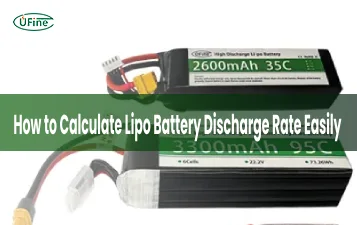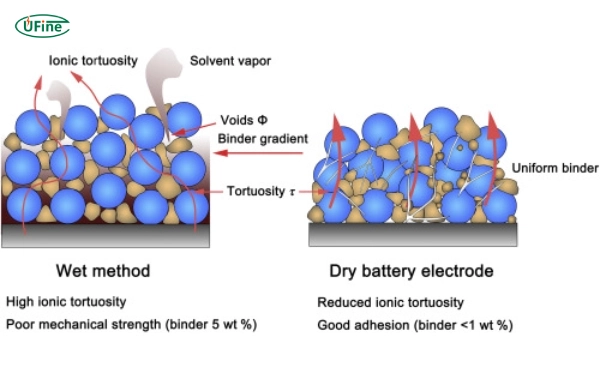There has been a growing interest in sustainable and more efficient energy storage solutions in recent years. One of the most exciting innovations in the battery industry is the development of the dry electrode battery. These batteries can potentially revolutionize how we store and use energy, with applications ranging from electric vehicles to renewable energy systems.
In this article, we will dive deep into what a dry electrode battery is, how it works, its advantages, and why it might be the future of energy storage. We’ll also explore the role of dry coating technology in these batteries and answer some frequently asked questions about dry electrode batteries.
Part 1. What is a dry electrode battery?
A dry electrode battery is a type in which the electrodes are coated with active materials using a dry coating process rather than the traditional wet coating methods. In simpler terms, it’s a battery that doesn’t require using liquid solvents to apply the materials to the electrodes. The electrodes are made from materials like lithium, essential for storing energy.
This process is significant because it eliminates the need for toxic solvents, making the battery safer and more environmentally friendly. The dry coating method can also lead to faster manufacturing times, lower costs, and higher performance.
How Does a Dry Electrode Battery Work?
In a dry-electrode battery, the electrodes (the anode and cathode) are essential for storing and releasing energy. Lithium ions move from the cathode to the anode when the battery is charged, and when it discharges, they move back. The dry coating process applies the active materials to these electrodes, which are then used to facilitate energy flow.
Because the dry electrode method doesn’t use liquid chemicals, it helps reduce the complexity of the manufacturing process. This can lower production costs while improving the battery’s efficiency.
Part 2. The technology behind dry electrode batteries
Dry Coating Process
The dry coating process is one of the most revolutionary aspects of dry electrode batteries. Instead of traditional wet methods, which involve applying the active materials to electrodes using a liquid solvent, the dry process uses pressure or heat to bond the materials directly onto the electrodes.
This process eliminates the need for volatile solvents, which can harm the environment and the workers involved in the manufacturing process. Additionally, it improves the battery’s overall efficiency by reducing energy losses during the production phase.
Key Materials Used in Dry Electrode Batteries
Dry electrode batteries rely on high-performance materials to achieve their impressive capabilities. Lithium is the primary material, playing a central role in energy storage. The dry coating process allows for a more uniform distribution of lithium on the electrodes, which enhances the battery’s overall performance.
Other materials include graphite for the anode and nickel, cobalt, and manganese for the cathode. These materials are critical in ensuring the battery’s longevity, capacity, and charging speed.
Part 3. Advantages of dry electrode batteries
Environmentally Friendly
One significant benefit of dry electrode batteries is that they are more environmentally friendly than traditional batteries. The absence of harmful solvents means that manufacturing produces fewer pollutants and waste, which benefits the environment and makes the production of dry electrode batteries safer for workers.
Faster Manufacturing
The dry coating method significantly reduces the time and complexity involved in manufacturing batteries. Eliminating solvents means no need for drying steps or solvent recovery, leading to a faster production process and lower costs.
Higher Performance and Efficiency
Dry electrode batteries can offer improved performance because the dry coating process allows for more precise control over the thickness and uniformity of the electrode layers. This leads to batteries with higher energy density, longer cycle life, and faster charging times.
Reduced Costs
Since the dry coating process eliminates the need for solvents and additional drying steps, it can significantly reduce the overall manufacturing costs of the battery. This makes dry electrode batteries a more cost-effective option, especially as demand for batteries in electric vehicles and renewable energy systems grows.
Part 4. Applications of dry electrode batteries
Electric Vehicles (EVs)
One of the most promising dry electrode battery applications is electric vehicles. With the increasing demand for EVs, the need for more efficient and cost-effective batteries has never been greater. Dry electrode batteries can offer higher energy densities and longer-lasting performance, making them a perfect fit for electric cars.
Renewable Energy Storage
Dry electrode batteries also have the potential to revolutionize renewable energy storage. By storing energy more efficiently, these batteries can help overcome the challenge of intermittency in renewable energy sources like wind and solar power, making renewable energy more reliable and accessible.
Portable Electronics
Dry electrode batteries could also play a key role in powering the next generation of portable electronics. With their improved performance and lower cost, they could be used in devices like smartphones, laptops, and wearables, offering longer battery life and faster charging times.
Part 5. Challenges of dry electrode batteries
Manufacturing Challenges
While dry electrode batteries have significant advantages, scaling up production is still challenging. The technology is relatively new, and it may take time before manufacturers can produce these batteries on a large scale.
Material Costs
The materials used in dry electrode batteries, particularly lithium and other metals, can be expensive. As demand for these batteries increases, the cost of raw materials may rise, potentially affecting their affordability.
Artikel Terkait: Dry Cell VS Wet Cell Batteries: What’s the Difference?
Part 6. The future of dry electrode batteries
Increased Adoption of Electric Vehicles
As the world moves toward a more sustainable future, dry electrode batteries are expected to play a central role in the electric vehicle revolution. With their high efficiency, lower cost, and environmental benefits, they could quickly become the standard for EV manufacturers.
Development of Solid-State Batteries
Dry electrode technology could also pave the way for solid-state batteries. These batteries, which use a solid electrolyte instead of a liquid one, are even more efficient and safer than traditional lithium-ion batteries. The dry electrode process could be key to making solid-state batteries a reality.
Part 7. FAQs
-
What is the main advantage of dry electrode batteries?
The primary advantage of dry electrode batteries is that they eliminate the need for harmful solvents in manufacturing, making them more environmentally friendly, cost-effective, and efficient. -
How does the dry coating process work?
The dry coating process involves applying active materials directly onto the electrodes using pressure or heat without liquid solvents. This results in a faster, cheaper, and more environmentally safe manufacturing process. -
Can dry electrode batteries be used in electric vehicles?
Dry electrode batteries are ideal for electric vehicles due to their higher energy density, longer life, and faster charging times. -
Are dry electrode batteries environmentally friendly?
Absolutely. Since manufacturing does not use toxic solvents and produces fewer waste materials, dry electrode batteries are much more sustainable than traditional battery technologies. -
What are the challenges of dry electrode batteries?
Some challenges include scaling up production and the high cost of materials such as lithium, which could affect the affordability of dry electrode batteries.
Related Tags:
More Articles

LiPo Battery Discharge Rate Guide & Calculation Tips
Understand LiPo battery discharge rates, C-ratings, and how to calculate max current. Essential guide for RC, drones, and electronics users.
High‑Capacity 3S LiPo Batteries: 5000 mAh vs. 10000 mAh
Compare 3S LiPo 5000mAh vs 10000mAh batteries by weight, power, and use. Find the best fit for your drone, RC car, or boat setup.
Top 5 Applications for Small 3S LiPo Batteries
Small 3S LiPo batteries power drones, RC gear, wearables, and robotics with high energy and low weight. Making them ideal for compact electronics projects.
Building and Charging Your Own 3S LiPo Pack: A Step‑by‑Step Guide
Learn how to build, balance, and charge a 3S LiPo battery pack safely at home with this complete DIY guide for hobbyists and beginners.
How to Choose the Right LiPo Battery Plug Type?
Discover the best LiPo battery plug types, how to choose them, and expert tips for safe usage, soldering, and maintenance.






